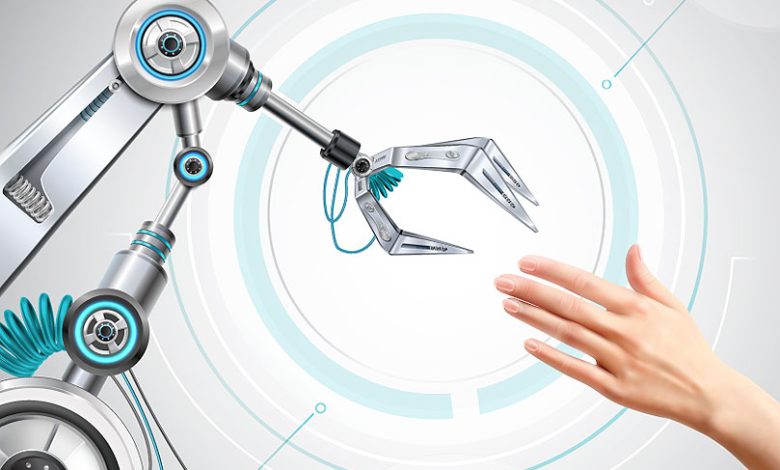Future of work and workers

(Part 3)
For the foreseeable future, as we saw in the last article, the service sector will account for a high percentage of both our GDP and employed force. For better or for worse, our economy already has the structure of highly developed countries in which the service sector usually accounts for 60 to 70% of both GDP and employment. This has been the result of decades of failed industrialization strategies in which our leaders focused on inward-looking, import-substitution, capital-intensive industries even before going through the stage of labor-intensive, export-oriented industries as our East Asian neighbors generally did. As a result, our manufacturing sector was stunted and could not absorb the surplus labor that was leaving the agricultural sector.
The migration from the rural to urban areas was facilitated by a host of low-productivity services jobs, both in the public and private sectors. Then came the wave of Filipino workers seeking overseas jobs, most of which were in the service sector. In the last 20 years, services jobs predominated in the highly successful BPO-IT industry in which the Philippines is already a global leader. In addition, the hospitality industry started to absorb more workers as tourism started to take off. That is why manufacturing never accounted for more than 15% of our employed labor force.
In a recent Manufacturing Summit of the Department of Trade and Industry-Board of Investments (DTI-BoI), Socioeconomic Planning Secretary Karl Kendrick Chua emphasized in his Keynote speech the importance of the manufacturing sector. In his words:
“If we are to grow and sustain our upper middle-income country status and eventually move up to high-income country status in the next two decades, we have to focus on agriculture and manufacturing. A strong, productive agriculture sector will provide a very good foundation for a competitive manufacturing sector.”
Secretary Chua was just reiterating a long-standing policy statement of DTI-BoI that “manufacturing industries have higher employment, income and output multipliers relative to the agriculture and services sectors. Manufacturing also promotes stronger inter-industry and inter-sectoral linkages, firm productivity, technological development and innovation. As such, the growth of the manufacturing industry improves the upgrading and diversification in the agricultural sector, as well as drives demand for higher value-added services. Taking all these into consideration, the Philippines is accelerating the manufacturing sector’s competitiveness towards the achievement of sustainable and inclusive development in the country.”
These views of our policy makers are based on the historical records of countries, especially in the Indo-Pacific region, that have attained upper-middle income and high-income status, such as Japan, South Korea, Taiwan, Singapore, Hong Kong, Thailand, Malaysia, and now China. Manufacturing has been the primary engine of growth of these highly successful economies, especially export-oriented manufacturing. The usual path of industrialization started with low-tech manufacturing such as food and beverage, furniture, textile and garments and footwear, and then proceeded to medium-tech such as fabricated metal products, rubber and plastic products, petroleum and other fuel products, and, finally, to the high-tech products such as machinery and equipment, transport equipment, electrical machinery, integrated steel, and chemical and chemical products. The Philippines, in my opinion, will be the exception to this traditional route to high-income status. Because we made some serious policy mistakes in our efforts to industrialize, manufacturing will never be the main engine of growth of the Philippine economy. Services (including those encompassed by Industrial Revolution 4.0) will be our major engine of growth on the way to high-income status.
Don’t get me wrong. If we play our cards right by improving the ease of doing business, investing in the training of skilled technical workers, fighting corruption and removing the many restrictions against foreign direct investments, we can develop a highly efficient and productive manufacturing sector. Our domestic market of some 110 million consumers today that can peak at about 150 million in the next 20 years will be a strong and sufficient foundation for the economies of scale needed by manufacturing enterprises such as those in food and beverages, wood articles, tobacco, machinery and equipment, publishing and printing, chemicals, paper and pulp products and electronics to be globally competitive.
We can also aspire to be major exporters, as we already have been, of electronic products; ignition wiring set and other wiring sets used in vehicles, aircrafts and ships; metal components; high-value food products; and articles of apparel and clothing accessories.
It is highly improbable, though, that we will ever be able to export computers, electric cars, railway equipment, airplanes, and ships. Our long-term competitive advantage in the global economy will be found more in the services sector such as in health, hospitality, entertainment, the creative industry and the BPO-IT sector. I also expect the fertility rate of the country to stay above replacement of 2.1 babies per fertile woman (it is today at 2.5) so that our young, growing and English-speaking population will continue to provide human resources, primarily in the service sector, to rapidly aging countries all over the developed world for many years to come.
For our manufacturing sector to attain global competitiveness so that we don’t victimize our domestic consumers with high-priced and low-quality consumer products, we must make sure that we turn out highly skilled technical workers for our factories. It is interesting to note that the United States, after which we fashioned our educational system, is suffering from a manufacturing skills gap. In an article that appeared in the website of Propel (www.propelplm.com), it was reported that the US is facing a skills gap in manufacturing. If we don’t prepare ahead, we may soon face the same situation as more tools of IR-4 are applied to the manufacturing sector, such as AI, Robotics, data analytics, and the Internet of Things.
One of the reasons for the skills gap mentioned in the article sounds very familiar: It noted that in the US, there is a stigma associated with people who are considered blue-collar workers. Many Americans view blue-collar workers as less educated. Many young workers also avoid blue-collar work because they believe employers don’t fully value this work segment. They believe CEOs and managers exact unfair demands from blue-collar workers while paying them the lowest wages possible. As a result of this bias against blue-collar work, the youth flock to white-collar jobs for more job stability, upward career mobility, and higher wages. No wonder that there is a shortage of blue-collar workers taking manufacturing positions such as welders, machinists, and freight carriers. This problem is magnified in the Philippines because of socio-cultural reasons. There is an obsession with obtaining college diplomas because blue-collar work is associated with the lower social classes.
This skills gap will worsen in the future as the digital revolution (IR-4) invades the manufacturing sector. As discussed in the article of Propel, there will be manufacturing jobs that will require workers to understand and fully embrace the digital tools that will appear in operations. Examples of these jobs that we are likely to see in manufacturing in the near future are:
o Predictive Supply Network Analyst. These analysts rely on the use of digital tools to move materials through a digital supply network to provide just-in-time (JIT) deliveries.
o Manufacturing Cybersecurity Strategist. The strategist helps prevent network security threats and hackers from creating breaches and stealing data.
o Smart Factory Manager. This manager uses machine learning algorithms and artificial intelligence to manage inventory levels and build schedules.
o Digital Twin Architect. An architect that makes virtual representations of processes, products, and systems.
o Smart Assurance (Q.A.) Manager. A manager who uses digital tools to manage product quality.
o Collaborative Robotics Technician. This technician sets up, monitors, and maintains collaborative robotics systems.
The challenge to our educational system is to increase the number of TESDA-type schools (not schools of engineering that produce graduates who sooner than later aspire to be bankers and white-collar executives) that would attract the youth who are not reluctant to dirty their hands with blue collar work and who can also be provided with enough mathematical skills to be able to learn on the job and through continuing education the digital tools that are increasingly being used in the manufacturing sector. Instead of putting up more academic universities, there should be more technical or vocational schools that utilize the dualvoc system famous in Germany such as the Dualtech Training Center Foundation, Inc. in Calamba, Laguna; the MFI Polytechnic Institute in Ortigas, Rizal; the Don Bosco Technical Institutes in different regions of the country; and the Center for Industrial Technology and Enterprise in Cebu. The dualtech (dualvoc) system goes beyond the usual internship or on-the-job training that requires students to spend a set of number of hours in a company that may not even assign them jobs related to what they are training for. As Jerry Muhi, Executive Director of Dualtech, explains, “Dual training system is an educational method where students have two learning venues — school and companies — a combination of theoretical and practical training which complement one another. Dualtech offers the two-year Electromechanics Technology course, a combination of electrical, mechanical, and electronics trades designed to serve as the foundation for more advanced technical subjects and applications. Graduates of Dualtech are ready for a working life of continuous learning, especially in view of the demands of IR 4.0.
Another model of the dualvoc approach is the partnership between the MFI Polytechnic Institute and the Mazda distributor Bermaz Auto Ph. As reported by Mikko David in the Philippine Daily Inquirer (Sept. 15), the first year of the program sees students take on academic and school work. This includes learning about the latest Mazda engine technologies as the students make use of the different mechanical components donated by Mazda Philippines. In their second year, students are immersed in the different Mazda dealerships for on-the-job training. During this term, the students are exposed to the practical application of what they learned in school. Mazda Philippines now has five of the graduates from this program under its payroll handling various jobs at its head office. Even more of them are now working in various Mazda dealerships as well as other service centers of competing auto brands. It is hoped that many more companies will adopt this collaborative model between school and business to turn out skilled workers in automotive technology.
As the Government increases its budget for education from the low of 2% of GDP closer to the average of 4% to 6% in the East Asian region, more of these technical schools should be established (instead of state colleges and universities) or, better still, the Government should give generous funding to private technical schools like the ones enumerated above and many more that can be established with the help of business and civil society. We need a technical education revolution if we are going to address the manufacturing skills gap as well as the acute shortage of carpenters, plumbers, mechanics, plumbers, electricians, etc. already existing in the construction sector, a shortage that is seriously endangering the Build, Build, Build program that is so essential to our sustainable and inclusive growth in the next decades to come.
To be continued.
Bernardo M. Villegas has a Ph.D. in Economics from Harvard, is professor emeritus at the University of Asia and the Pacific, and a visiting professor at the IESE Business School in Barcelona, Spain. He was a member of the 1986 Constitutional Commission.




